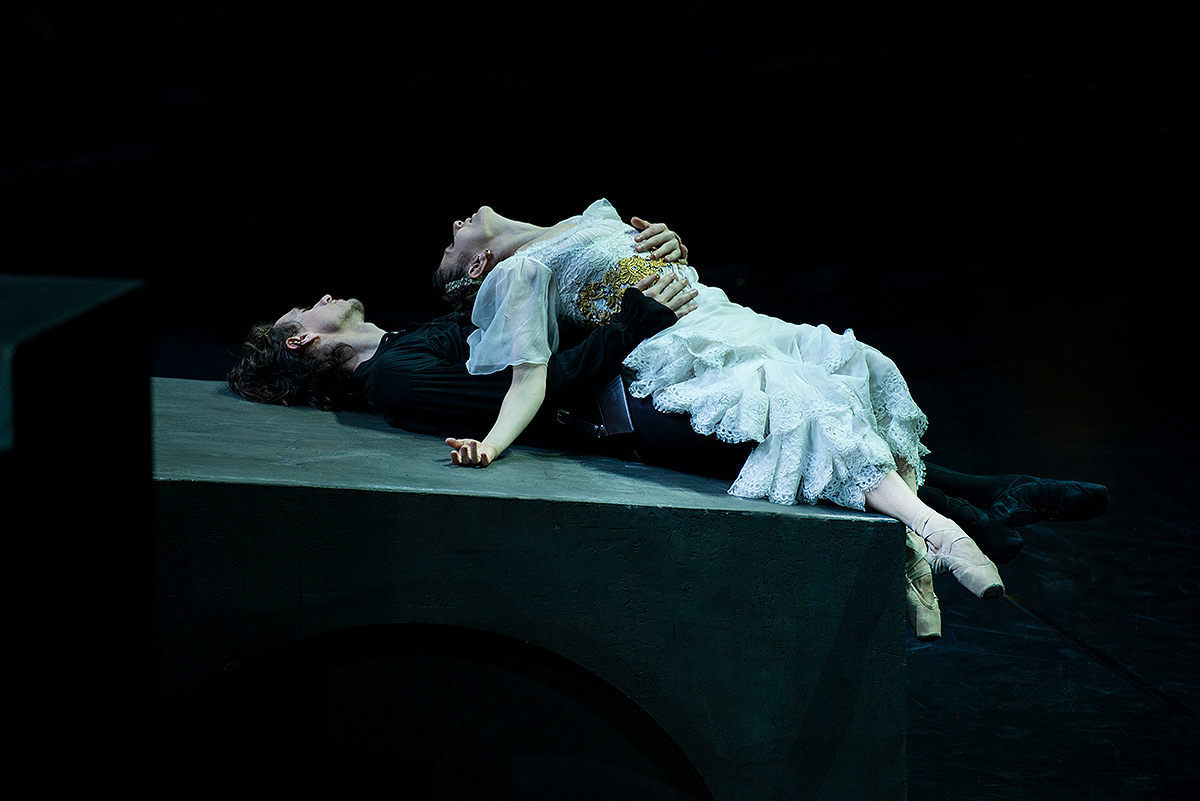
© Jack Thomson. (Click image for larger version)
Polunin Ink
Romeo & Juliet
★★★★✰
London, Royal Albert Hall
1 December 2021
poluninink.com
This second performance of Johan Kobborg’s one-act interpretation of Romeo & Juliet came over two years after its world premiere in the enormous open-air venue of the Arena di Verona. The whole production was transplanted to the indoor setting of The Royal Albert Hall for another sold-out, one-night-only event; a new and unique form of pop-up ballet that provides a welcome alternative to the big company stranglehold on such major productions.
The show’s popularity was driven by the star power of the pair portraying the star-cross’d lovers, Sergei Polunin and Alina Cojocaru, and it is the busy company founded by the former, Polunin Ink, that mounted this production. Polunin famously walked out of The Royal Ballet not long after becoming its youngest-ever male principal and – almost a decade later – his stated aim for Polunin Ink is to ‘evolve the classical vocabulary of dance and introduce it to wider audiences’. He comes from a long line of ballet rebels with similar intentions, stretching all the way back to Anna Pavlova. Controversy has followed Polunin all the way but notwithstanding the negative headlines, no current ballet star elicits such a devoted and worldwide following. Despite covid restrictions, the Royal Albert Hall was packed to the upper tiers with his followers, many arriving in London from around the globe.
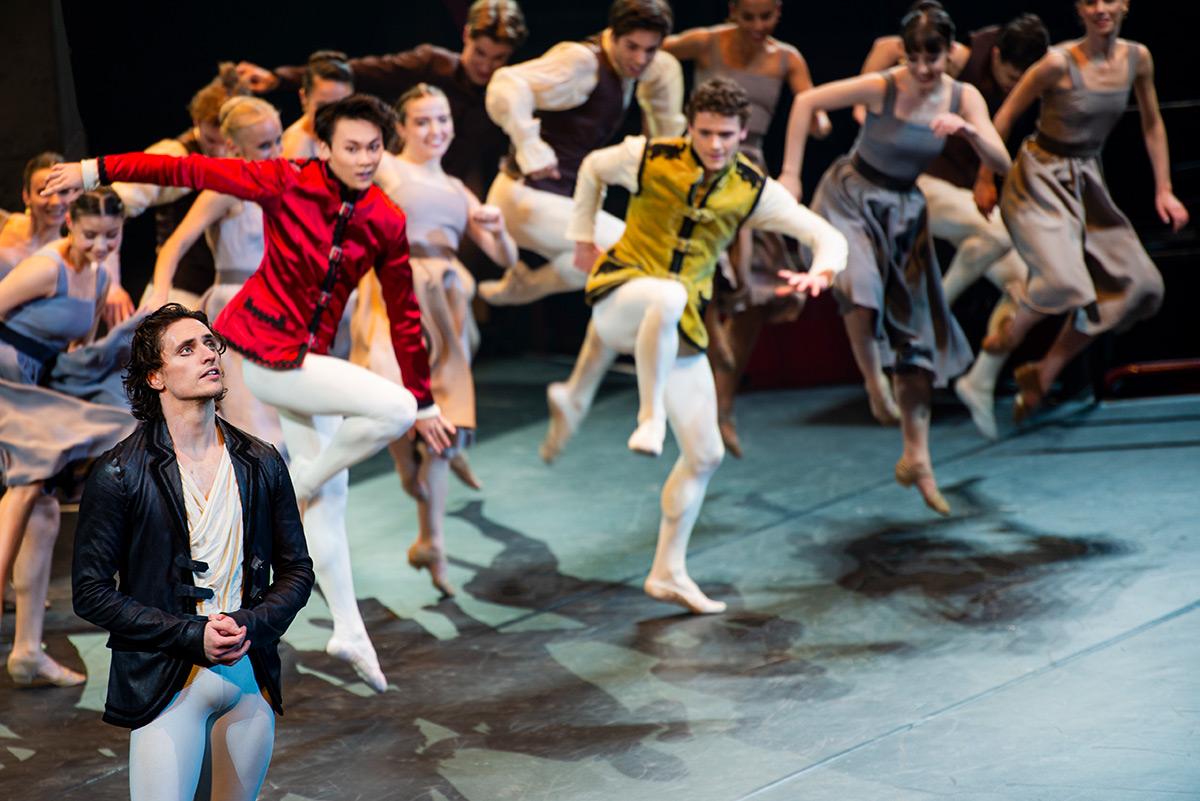
© Jack Thomson. (Click image for larger version)
Kobborg has created a much-redacted version of Shakespeare’s tragedy, especially when compared to the familiar choreography of Kenneth MacMillan and other major productions by Frederick Ashton and John Cranko. The action is cut to the bone in a ballet that lasted just under 80 minutes. There is no nurse, no bedroom pas de deux, no market place sword fight between the Capulets and Montagues (no Lord and Lady Montague, at all), no Rosalind, no harlots; poor Juliet has but two friends and the Capulet ball is more like a house party.
None of these excisions or reductions are missed and the narrative rattles along with a compelling momentum, enhanced by some strategic embellishments, such as Lord Capulet’s pompous announcement of the impending marriage of Juliet to Paris and, while the Priest gives Juliet the sleeping potion, there is a simultaneous background scene that shows the intention for her to wake up and be reunited with Romeo.
The production is dominated by David Umemoto’s monumental, brutalist design of a castle with ultra steep stairs and gothic arches, which must have been even more striking in the open space of the Verona Arena than it was here. Kobborg had been inspired by a miniature architectural design by Umemoto and the set is the same design scaled up into a major work of art. The need to move it around into different configurations was a significant stage management challenge that caused some uncomfortable pauses between scenes and occasional background noise. Watching Cojocaru standing, vulnerably, at the top of an immense set of steep stairs proved that she is no sufferer from vertigo and made me wonder about the difficulty of the Risk Assessment for this show!
Both Polunin and Cojocaru delivered performances of great power and artistry. Kobborg’s choreography for Polunin played to his virtuoso strengths of dancing in the air, his classical technique fashioned with a joyous abandon that gives his dancing a refreshingly realism. That joy was also apparent in his coltish excitement after meeting Juliet, incidentally on the way into the ball, rather than during it. But it was offset by the vitriolic anger he displayed in the swordfight with Tybalt (Nikolas Gaifullin). The stage fighting between Polunin and Gaifullin was one of the most thrilling fight scenes I have seen in ballet, perhaps made more so because the duel that came before it, between Tybalt and Mercutio (an otherwise excellent performance by Daichi Ikarashi) was the exact opposite!

© Jack Thomson. (Click image for larger version)
After winning the duel, Polunin’s Romeo contemptuously throws his sword at Tybalt’s body and then turns to see Juliet and crumbles in despair at what he has done. The Prokofiev music that normally accompanies Lady Capulet’s dance of grief at the end of MacMillan’s second act is here taken up by an angst-ridden duet for Romeo and Juliet. This whole sequence showed Kobborg’s intuitive understanding of a ballet in which he had performed many times and his innovation at doing it differently and just as well, if not better. Similarly, the balcony pas de deux (although perhaps now re-named the high stairs duet) was refreshingly new choreography, shorn of any mimicry; earthy, visceral and passionate. Where MacMillan left the lovers reaching for each other, Kobborg finished with them in opposite corners of the stage but just as agonisingly craving each other’s touch.
The uniqueness of this R&J lies not with Polunin but in the love letter it represents between the choreographer and his life partner. Many years ago, when aged 19, Cojocaru substituted for an injured ballerina to play Juliet alongside Kobborg and it was the beginning of an amazing journey. No-one understands Cojocaru’s artistry better than Kobborg and he has wrapped his choreography around her power of expression in a way that is both intimate and projects powerfully across such a vast auditorium. Cojocaru is absolutely convincing as the juvenile Juliet (without the need of a Nurse to show that she has become a woman) and her maturity as a performer accentuates every scintilla of this special role. This may be her fifth different production as Juliet but I suspect it is the one that will mean the most.
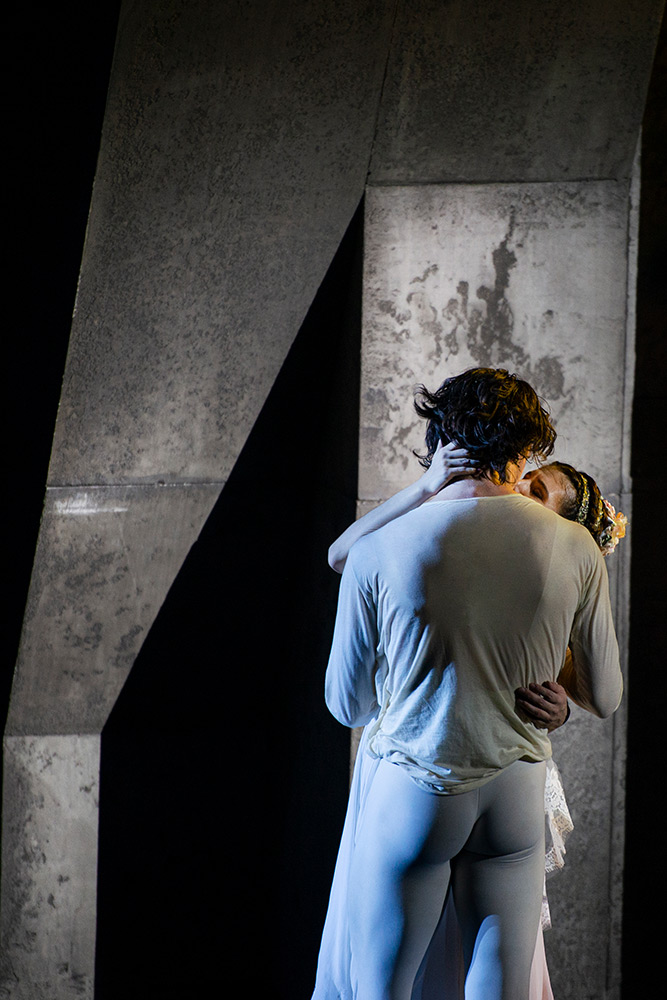
© Jack Thomson. (Click image for larger version)
The difficulties of staging a scratch production in a major venue without the full-time resource of a company base cannot be underestimated and the rough edges were occasionally apparent (particularly in those noisy set transitions). However, the cast of 35 other freelance performers from all over the world gave a good account of being something more substantial than a pop-up entourage and there is no mistaking that this is an outstanding new and inventive addition to the vast catalogue of danced Romeo & Juliet productions.













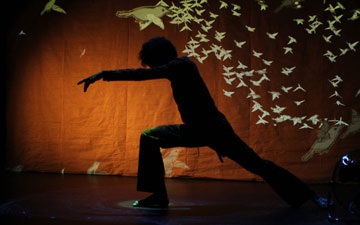

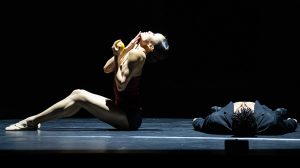

You must be logged in to post a comment.